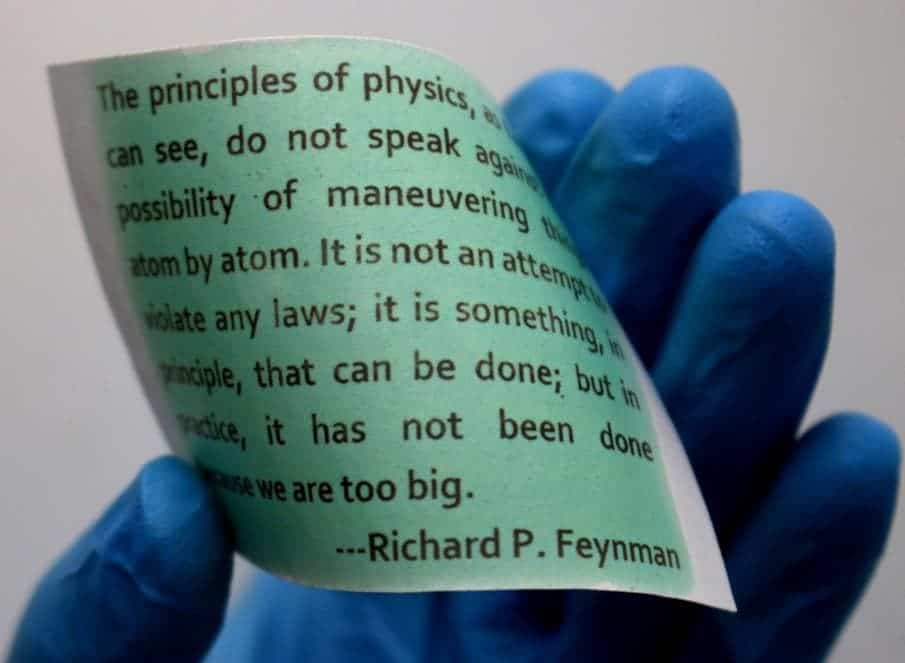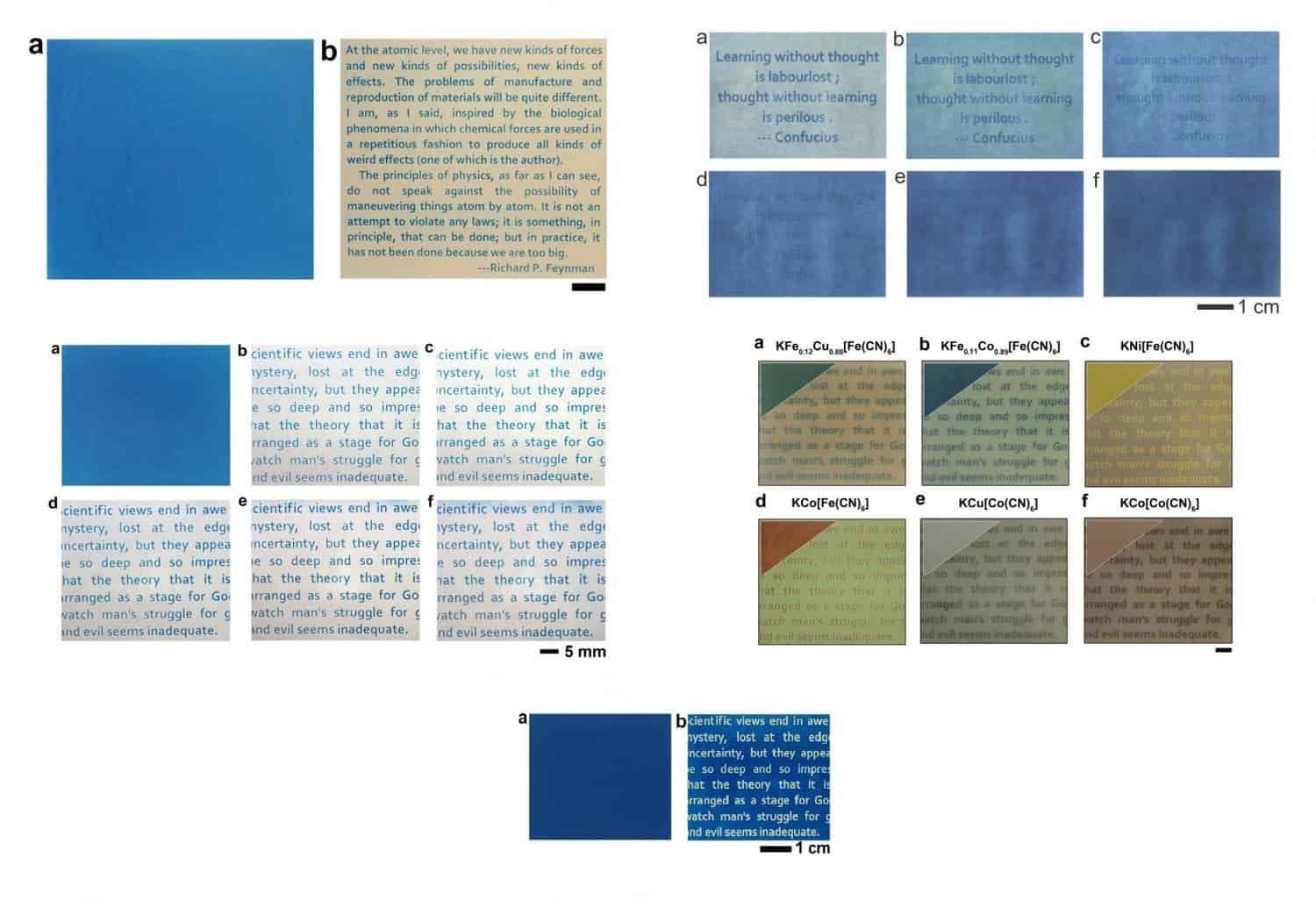A new technology could change how we think about paper and printing — forever. Based on UV-sensitive paint, the method allows paper to be re-used, making it much cheaper and more sustainable than traditional printing.
So we’ve seen our fair share of creative ink recipes throughout time — some to grow, some to raise awareness, others made from pee. They’re all awesome. But once ink hits the paper, it’s there for good. If you want to print something else, you need a fresh sheet of paper.
Or do you? A joint US-Chinese team has developed a novel nanoparticle coating which can make traditional inks oh-so-last-year. This blue substance can easily be applied to paper — either by spraying or soaking — and changes color when exposed to concentrated ultraviolet (UV) light. If you need to print something else, just heat the sheet to 120 degrees Celsius (248 Fahrenheit) and voila — the ink ‘resets’. As each sheet of paper allows for more than 80 re-writes, the ink could reduce paper usage in the long run, saving a lot of money and a lot of trees in the process.
I’m blue
Treated paper “has the same feel and appearance as conventional paper, but can be printed and erased repeatedly without the need for additional ink” said teammember Yadong Yin from the University of California, Riverside, for Phys.org.
“Our work is believed to have enormous economic and environmental merits to modern society.”
The team combined two kinds of nanoparticles for the ink. The color is created using Prussian blue particles, a pigment which becomes colorless when it gains electrons. The other ingredient is titanium dioxide (TiO2) particles, which catalyze the photochemical reaction between UV rays and the ink — they release the electrons needed for the reaction.
What you get is a beautiful blue color that turns colorless under UV rays. So unlike traditional printing methods, this ink prints the blank spaces of the page instead of the words themselves. Alternatively, you can print the letters only and the text will come out white on a blue backdrop.
The print remains stable for at least five days before the page slowly starts fading back to blue, as pigment particles shed the extra electrons. Or you can just heat it up to reset it as fast as you like.
Applying the coat is a quick and cheap process, and the researchers hope this will promote wide-scale use. As each sheet can be used for 80 or more different prints without further costs, it’s easy to see the commercial appeal of the technology.
Add to that the fact that it also reduces paper use and waste, and you get a real winner. In the US, estimates place up to 40% of waste as discarded paper. All this waste translates to added costs for transport, recycling, or disposal. It also fuels the country’s ever-growing need for paper, an industry which consumes around 68 million trees every year and is one of the dirtiest in the country.
Following the paper trail
Yin first unveiled the prototype ink in December 2014. Its first iteration could only sustain 20 printing cycles, and was trickier to apply onto paper than the current material. The team says they improved the stability, ease of application, and lowered production costs over their previous product.
Now, they’re hard at work taking their technology to a printer near you.
“Our immediate next step is to construct a laser printer to work with this rewritable paper to enable fast printing,” Yin told Phys.org.
“We will also look into effective methods for realizing full-colour printing.”
But my question is — can we make tattoos with this ink?
The full paper “Photocatalytic Color Switching of Transition Metal Hexacyanometalate Nanoparticles for High-Performance Light-Printable Rewritable Paper” has been published in the journal Nano Letters.











